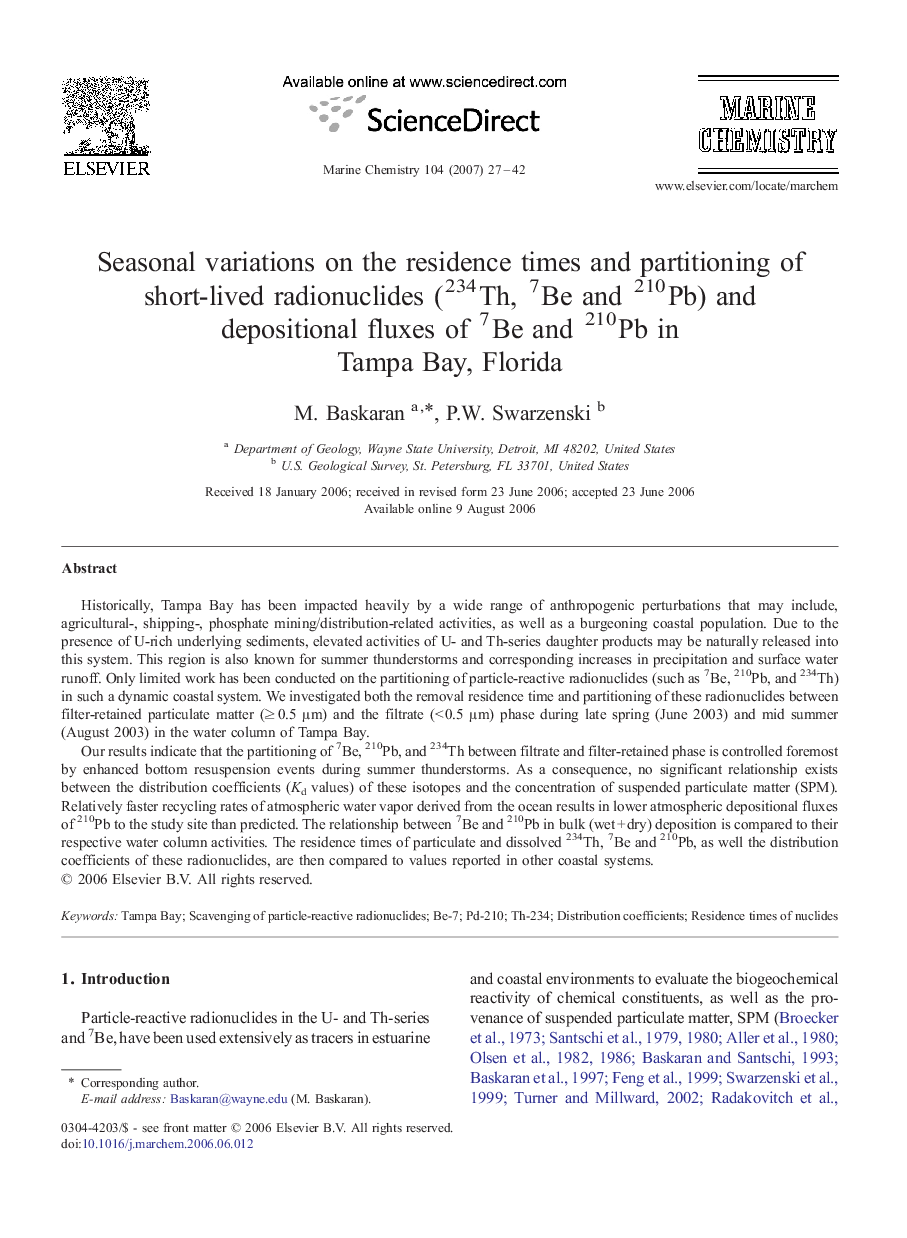| Article ID | Journal | Published Year | Pages | File Type |
|---|---|---|---|---|
| 1263334 | Marine Chemistry | 2007 | 16 Pages |
Historically, Tampa Bay has been impacted heavily by a wide range of anthropogenic perturbations that may include, agricultural-, shipping-, phosphate mining/distribution-related activities, as well as a burgeoning coastal population. Due to the presence of U-rich underlying sediments, elevated activities of U- and Th-series daughter products may be naturally released into this system. This region is also known for summer thunderstorms and corresponding increases in precipitation and surface water runoff. Only limited work has been conducted on the partitioning of particle-reactive radionuclides (such as 7Be, 210Pb, and 234Th) in such a dynamic coastal system. We investigated both the removal residence time and partitioning of these radionuclides between filter-retained particulate matter (≥ 0.5 μm) and the filtrate (< 0.5 μm) phase during late spring (June 2003) and mid summer (August 2003) in the water column of Tampa Bay.Our results indicate that the partitioning of 7Be, 210Pb, and 234Th between filtrate and filter-retained phase is controlled foremost by enhanced bottom resuspension events during summer thunderstorms. As a consequence, no significant relationship exists between the distribution coefficients (Kd values) of these isotopes and the concentration of suspended particulate matter (SPM). Relatively faster recycling rates of atmospheric water vapor derived from the ocean results in lower atmospheric depositional fluxes of 210Pb to the study site than predicted. The relationship between 7Be and 210Pb in bulk (wet + dry) deposition is compared to their respective water column activities. The residence times of particulate and dissolved 234Th, 7Be and 210Pb, as well the distribution coefficients of these radionuclides, are then compared to values reported in other coastal systems.
